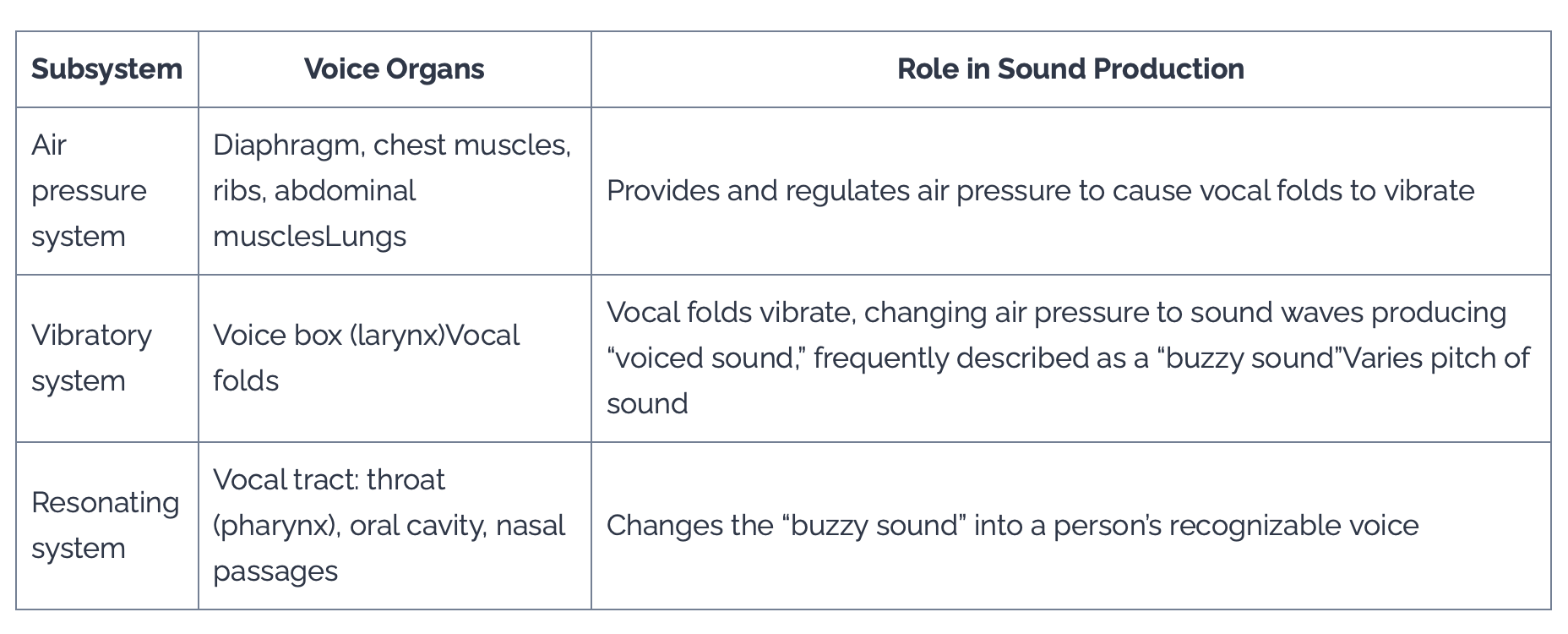
Understanding Voice Disorders
Voice “As We Know It.” The “spoken word” results from three components of voice production: voiced sound, resonance, and articulation.
• Voiced sound: The basic sound produced by vocal fold vibration is called “voiced sound.” This is frequently described as a “buzzy” sound. Voiced sound for singing differs significantly from voiced sound for speech.
• Resonance: Voice sound is amplified and modified by the vocal tract resonators (the throat, mouth cavity, and nasal passages). The resonators produce a person’s recognizable voice.
• Articulation: The vocal tract articulators (the tongue, soft palate, and lips) modify the voiced sound. The articulators produce recognizable words.
Voice Mechanism. Speaking and singing involve a voice mechanism that is composed of three subsystems. Each subsystem is composed of different parts of the body and has specific roles in voice production.
Three Voice Subsystems. Parkinson’s Disease creates physical, emotional, and social challenges. Over time, you lose your ability to use your voice to connect with others and face isolation and loneliness. Others begin to leave or not include you in the conversation. I will help you understand the physical changes in your voice. Knowing the why behind what has happened will help you understand these challenges and help you find your voice.

Key Function of the Voice Box
The key function of the voice box is to open and close the glottis (the space between the two vocal folds).
• Role in breathing: Open glottis
• Role in cough reflex: Close, then open glottis
• Role in swallowing: Close glottis
• Role in voice: Close glottis and adjust vocal fold tension (plus additional functions for singing)
Cartilages.
• Role in cough reflex: Muscles
• Role in swallowing: Nerves
• Role in voice: Vocal folds